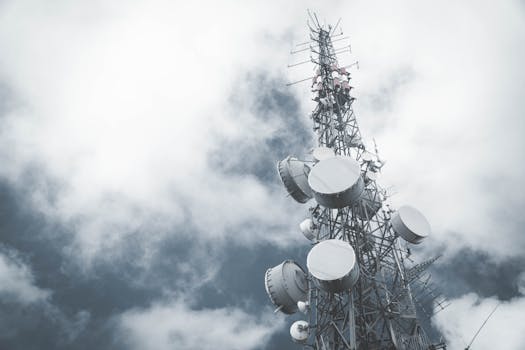
Breaking Barriers: How Recent Developments are Transforming Satellite Communication
Satellite communication is undergoing a significant transformation, thanks to recent developments in technology. Satellite Communication has been a vital part of global communication for decades, but it has been limited by high costs, limited bandwidth, and lack of accessibility. However, with the advent of new technologies and innovations, the industry is experiencing a significant shift. In this article, we will explore the recent developments that are breaking barriers and transforming satellite communication.
Advances in Technology
One of the primary drivers of the transformation in satellite communication is the advancement in technology. The development of new satellite technologies such as High-Throughput Satellites (HTS) and Very High-Throughput Satellites (VHTS) has increased the capacity and reduced the cost of satellite communication. These new satellites offer higher bandwidth and faster data transfer rates, making them ideal for applications such as broadband internet, video streaming, and IoT connectivity.
Another significant development is the use of phased array antennas and beam-hopping technology. These technologies enable satellites to dynamically allocate bandwidth and adjust their beam patterns to meet changing demand. This results in more efficient use of satellite resources and improved network performance.
Low Earth Orbit (LEO) Constellations
Low Earth Orbit (LEO) constellations are another recent development that is transforming satellite communication. LEO constellations consist of a large number of small satellites that operate in low Earth orbit, typically at an altitude of around 500-1,200 km. These constellations offer several advantages, including lower latency, higher bandwidth, and improved connectivity.
Companies such as SpaceX, OneWeb, and Amazon’s Kuiper Systems are launching LEO constellations to provide global broadband internet coverage. These constellations have the potential to connect millions of people worldwide, especially in remote and underserved areas where traditional connectivity is limited.
5G and Satellite Communication
The integration of 5G and satellite communication is another significant development that is breaking barriers in the industry. 5G networks require a high degree of connectivity and low latency, which can be challenging to achieve in remote and rural areas. Satellite communication can play a crucial role in extending 5G coverage to these areas, enabling the deployment of 5G networks in areas where traditional infrastructure is limited.
Satellite communication can also provide backup connectivity during outages or disasters, ensuring that critical communications remain available. The use of satellite communication in 5G networks can also enable new use cases such as IoT connectivity, smart cities, and autonomous vehicles.



